RAIL 200
2025 sees a number of events marking Railway 200, the 200th anniversary of the birth of the ‘Modern Railway’. The history of railways is complex and much are lost to the mists of time, however despite the complexity, one thing is for certain; the history of railways stretches back far further than two hundred years. So, what is this history, and what is the significance of 1825 (more specifically 27th September 1825)?
When discussing the history of railways, the fundamental question of what is a railway needs to be answered. If the definition is one of more sets of guiding tracks to ease the passage of vehicles, then archaeological investigations have traced their history back to the ‘Post Track’ an ancient trackway constructed in the Somerset Levels in about 3,838 BCE. This rudimentary construction of wooden planks across posts driven into the marshy ground is a world away from what we understand to be a railway, but it is one in its very earliest conception. More ‘railway’ like was the discovered paved trackway crossing the Isthmus of Corinth. This consisted of grooved ‘rails’ in the limestone base, used to help transport small boats across the isthmus prior to the canal’s construction. Similar discoveries were made across the ancient world, yet no further developments are known of until the early 16th century, in what is now Germany.
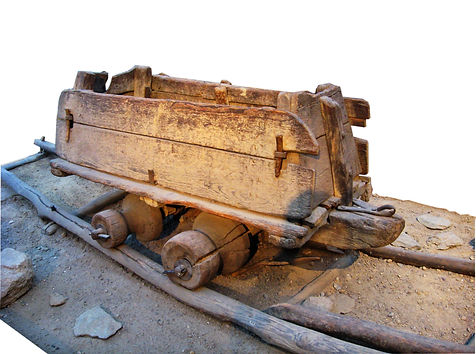
Wooden mine cart from the 16th century, discovered in Transylvania.
During this period the rails themselves were also transformed. The traditional wooden rails wore quickly and would rot easily in the damp environment of the mines, so alternatives were sought. The middle of the 18th century saw the introduction of cast iron rails on the industrial lines in Coalbrookdale, Shropshire. The new rails saw the waggonways become plateways, a reflection of the change in design.
All of these railways were private ventures, the first public railway was a few years later. Many lines lay claim to this honour, but the strongest claim is held by the Lake Lock Rail Road Company. This was opened near Wakefield in 1796; others such as the Middleton Railway (following public incorporation) and the Surrey Iron Railway vie for the honour too. At this stage, all were by now horse-drawn plateways. Where did steam come into the equation?
The use of steam also has an extremely long history. Its discovery as a form of propulsion has been attributed to Hero of Alexandria in the first century AD, whose ‘aeolipile’ has been credited as the first form of steam jet propulsion (essentially this was a sphere with two jets, which acted as forms of propulsions when the water inside the sphere was sufficiently heated). Earlier claims have bene made for Vitruvius the Roman engineer, who described a similar appliance in his ‘De Architectura’ of c. 30-20 BC. It is not known whether his description was anything more than a concept before realisation by Hero.
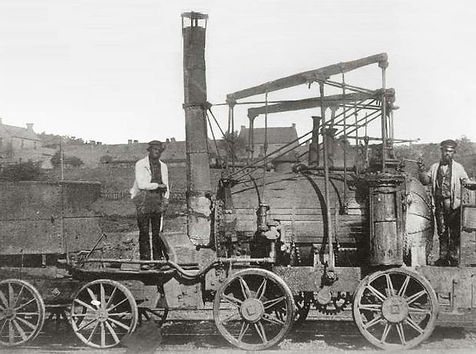
Hedley, Forster and Hackworth's 'Puffing Billy' in 1862. Built in 1815, this is the oldest surviving steam locomotive in the world. It can be seen in the Science Museum in Kensington
The initial twenty-six miles of route was unremarkable, the bridge crossing the river Skerne perhaps the most notable feature; its purpose the same as the many endeavours which preceded it, the transportation of coal from the mines to the ports. Yet it marked the fulcrum of the many hundreds of years of disparate innovation and development into a unified approach. This coalescence meant railways had found their standards and could now expand around the world.
And what an influence such expansion would have on the world; both for good and ill. It ushered in the modern world, bearing witness to some of the greatest triumphs and worst deprivations of the last 200 years. Such a mixed legacy is to be expected for something so influential to world development. It allowed some of the greatest social migrations in history, it fuelled the expansion of the industrial revolution, it led to fundamental changes to society.
Despite the long history of development preceding that Tuesday in September, when Stockton and Darlington locomotive number 1 ‘Locomotion’ set off on its notable trip, this event marked the birth of the modern railway, the railways we know today. And much of what was witnessed in 1825 is still with us; much of the original Stockton and Darlington route is still in operation today, the concept of wagons being hauled by a locomotive along track spaced 4’ 8 1/2” apart would be familiar. Even the original locomotive is still in existence and will play a starring role in this year’s celebrations.
It is this, the distillation of past achievements and the setting of the blueprint for future development and expansion, which marks this 200th anniversary. Not just the anniversary of railways, but the anniversary of an event which fundamentally changed the world.

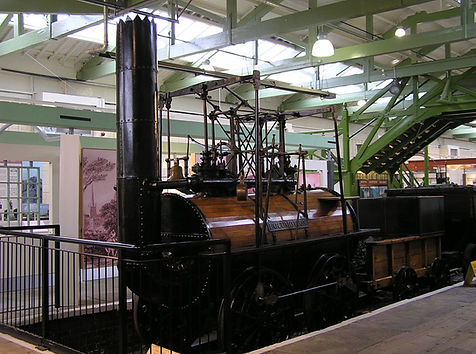
Locomotion Number 1. The motive power for the notable first service on the Stockton and Darlington railway in 1825
Quite when a pair of deliberately constructed rails (as opposed to grooves) spaced apart consistently, were adopted is not known, but the earliest report relates to a steep funicular railway serving the Hohensalzburg Fortress in Austria. This line is still in existence; a candidate for the oldest operational railway in the world. Subsequent to that, mining operations were also making use of these innovations to help move heavy and awkward loads through the restricted mining tunnels. These waggonways spread throughout middle and western Europe, including the UK, increasing in length and complexity.
One of these lines opened in Middleton, just outside of Leeds, in 1758. This line was like so many other industrial railways at the time, serving a number of collieries and linking them to wharfs on the nearby navigable river. Initially these were powered by man or horse, and despite the limited loads this power was capable of handling, the lines still revolutionised the mine’s profitability. This railway still exists today, the oldest continuously operating non-funicular railway in the world.
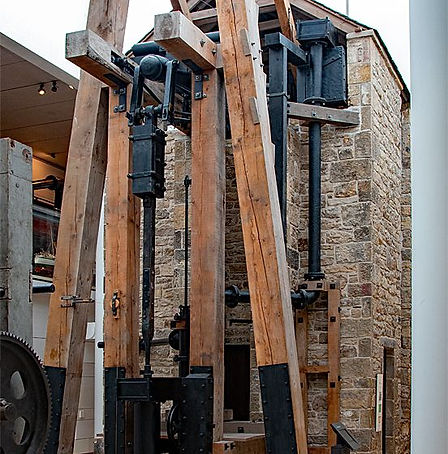
Replica of a Thomas Newcomen beam pump engine.
For many centuries steam as a form of propulsion was nothing more than an evolution from a basic concept to very simple piston engines. It was not until 1712 and the design of Thomas Newcomen did the steam pumping engine have its first practical application. It was used to pump water from mines, and although its initial designs had mixed levels of success, it marked a revolution in mining.
Further refinements around the design were made by the engineer James Watt, until a breakthrough was made in the early 19th century by the Cornish engineer Richard Trevithick, whose locomotive designed for the Penydarren Ironworks tramway in 1804 worked the world's first locomotive-hauled railway journey. It was at this point that the marriage of locomotive and rail was made, yet this is not what is being celebrated by this 200th anniversary.
Nor is it the anniversary of ‘Puffing Billy’, the oldest surviving steam locomotive in the world. That 200th anniversary passed ten years ago in 2015. No, ‘Rail 200’ recognises the anniversary of the opening of the Stockton and Darlington Railway. This railway, opened on 27th September 1825, was the first public railway to use steam locomotives; albeit for freight movements, passenger trains had another six years of horse-drawn operations.
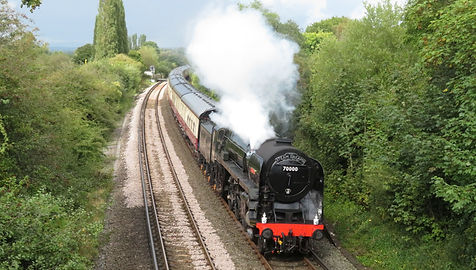
A photograph taken nearly 200 years after the opening of the Stockton and Darlington, yet much would be familiar to a witness of the day. The track, the steam and the smell...if not necessarily the speed!
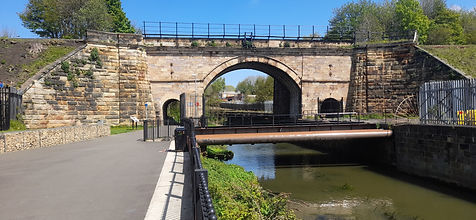
A survivor from a past age. The Skerne Bridge is an original relic from the first days of the Stockton and Darlington. And it still carries trains 200 year later.